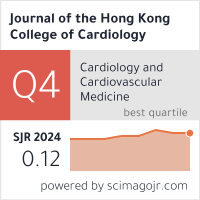Abstract
Introduction : A pilot cluster-based 24-hour PPCI service in a phased expansion program was launched in October 2018. This study aimed to compare the 30-day mortality and major bleeding event in acute STEMI patients presenting outside office hours who received historical thrombolytic therapy and PPCI under the newly implemented 24-hour service model. Methods and results : A single center retrospective study was conducted on consecutive STEMI patients presenting outside office hours, who received urgent thrombolytic therapy or PPCI between 2016-2019. The primary endpoints were 30-day mortality and major bleeding event. The secondary endpoints were thrombolytic failure rate and hospital length of stay. A total of 331 patients were analyzed. 30-day mortality occurred in 11.7% in thrombolytic group and 4.2% in PPCI group ( P = .02). Major bleeding events occurred in 8% in thrombolytic group and 2.1% in PPCI group ( P = .02). Multivariate analysis identified age ≥ 75 as an independent factor associated with major outcomes. Thrombolytic failure occurred in 31.4% of patients. The median lengths of stay were not different between the two groups (5 vs 4 days, P = .29). Conclusions : Compared with thrombolytic therapy, PPCI in patients with acute STEMI presenting outside office hours is associated with lower risks of 30-day mortality and major bleeding event. Age ≥ 75 was an independent risk factor associated with mortality and bleeding outcome.
Recommended Citation
Derek Pok-Him Lee, Kam-Tim Chan, Michael Kang-Yin Lee, Eric Chi-Yuen Wong, Retrospective observational study comparing two reperfusion strategies in patients with acute STEMI presenting outside office hours Journal of the Hong Kong College of Cardiology 2023;29(5) https://doi.org/10.55503/2790-6744.1494
Creative Commons License

This work is licensed under a Creative Commons Attribution-Noncommercial-No Derivative Works 4.0 License.



